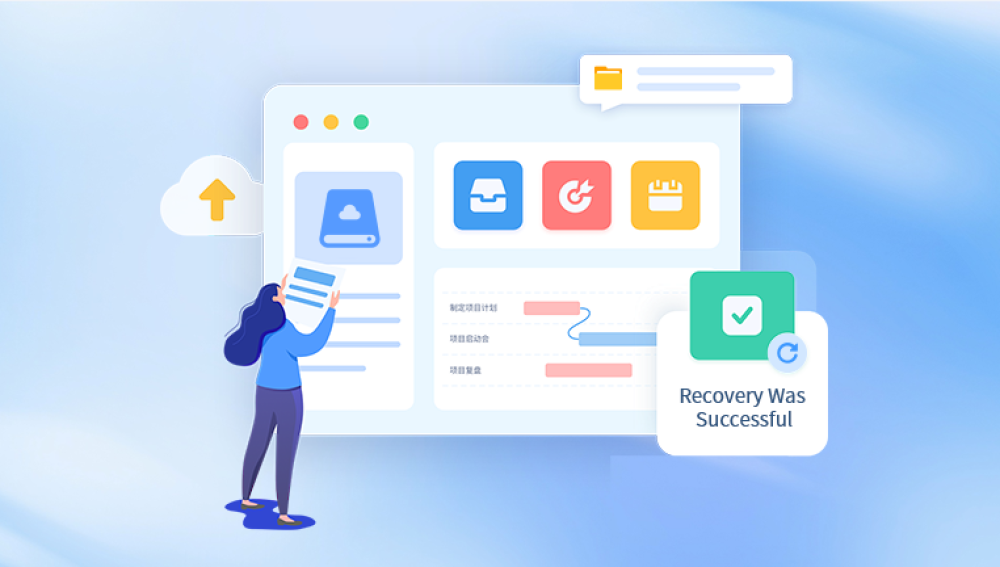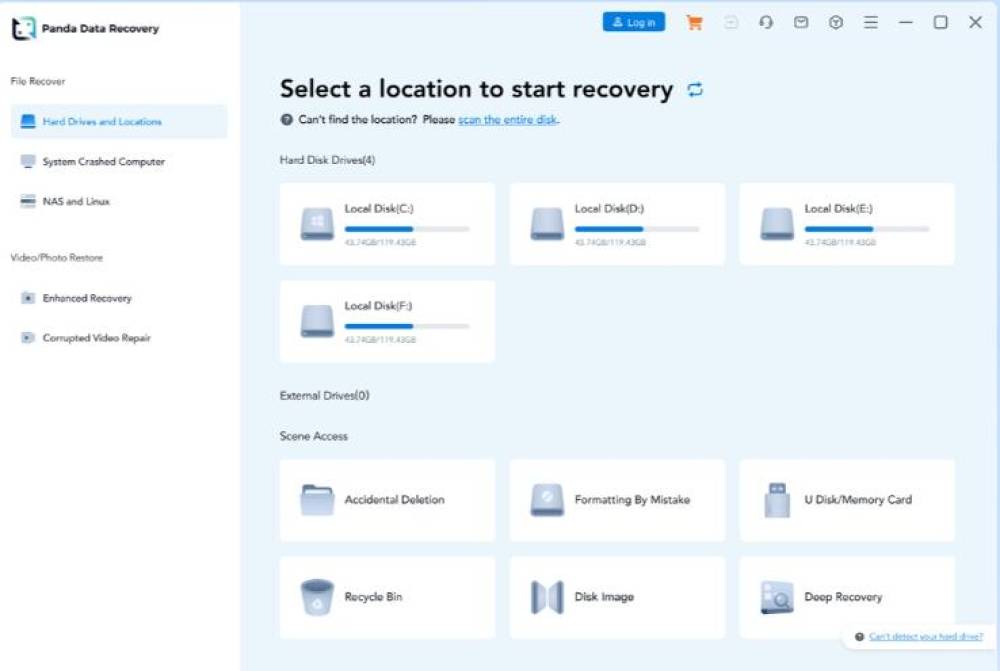Your web history can serve as a digital breadcrumb trail showing where you've been, what you've read, watched, searched for, and researched. Whether you're a student retrieving forgotten research links, a professional checking past work activity, or a parent monitoring online usage, having access to browsing history can be critical. But what happens when it disappears?
Perhaps you’ve accidentally deleted your browser history. Maybe someone else did it intentionally. Or maybe a system crash or browser reset wiped everything out. Whatever the cause, the good news is that deleted web history isn't always gone forever. There are various methods both basic and advanced that you can use to recover it.
Every web browser stores history in a local file on your device. These files record visited URLs, page titles, timestamps, and even thumbnails of websites. Depending on the browser and system settings, this data might also be synced with cloud services or stored in user profiles.

When history is deleted:
The file may be removed entirely.
The browser may just hide or flag it as deleted.
In some cases, the data remains recoverable unless overwritten by new files.
This means timing and method are crucial. The sooner you act, the better your chances of recovering deleted data.
Recovering Deleted History in Google Chrome
Google Chrome is one of the most used browsers worldwide. Here are several methods to recover deleted Chrome history.
1. Check Google Account Activity (Sync Enabled)
If you’re signed into Chrome with your Google account and have sync enabled, Chrome history may still be available online.
Steps:
Visit myactivity.google.com.
Sign in with your Google account.
Browse your activity by date, app, or device.
Look under “Web & App Activity” to find deleted or past web searches and visits.
This method doesn’t always include full URL paths, but it can offer helpful context and keywords to revisit your past searches.
2. Use DNS Cache (Windows)
If the browser was closed but the system wasn’t rebooted, your system’s DNS cache may still contain website addresses.
Steps:
Press Windows + R, type cmd, and hit Enter.
In the Command Prompt, type:
bash
CopyEdit
ipconfig /displaydns
Press Enter.
This displays a list of recently visited websites. It doesn’t show timestamps or full paths but may help reconstruct history.
3. Restore Previous Versions (Windows)
If you know the path of Chrome’s user data, you might be able to restore a previous version of the file.
Steps:
Navigate to:
sql
CopyEdit
C:\Users\[Your Username]\AppData\Local\Google\Chrome\User Data\Default
Right-click the History file.
Select Properties > Previous Versions tab.
Choose a restore point (if available).
Windows must have System Protection enabled to access previous versions.
Recovering Deleted History in Firefox
Firefox stores history data in the places.sqlite database file. Here’s how to recover it.
1. Check Firefox Sync
If you use Firefox Sync, you can restore history by signing in on another device or reinstalling the browser.
Steps:
Click the menu icon (three lines) > Settings.
Under Sync, check if history is enabled.
Sign in with the same Firefox account on another device.
2. Restore from Backup
Firefox automatically backs up bookmarks and some history components.
Steps:
Press Ctrl + Shift + B to open the Library.
Click Import and Backup > Restore.
Choose a date before the deletion occurred.
While this mostly restores bookmarks, some visited sites tied to them may reappear in history suggestions.
3. Use File Recovery Software
Locate Firefox's profile folder:
makefile
CopyEdit
C:\Users\[Your Username]\AppData\Roaming\Mozilla\Firefox\Profiles
Look for places.sqlite and try recovery tools (discussed later) to restore a previous version of this database.
Recovering Deleted History in Safari (macOS and iOS)
Safari stores web history in a file called History.db.
On macOS:
1. Check iCloud Sync
If Safari is synced with iCloud:
Open System Preferences > Apple ID > iCloud.
Ensure Safari is checked.
Visit another Apple device using the same iCloud and open Safari to review history.
2. Restore from Time Machine
If you use Time Machine backups:
Open Finder and navigate to:
javascript
CopyEdit
~/Library/Safari/
Open Time Machine and go back to a date before the deletion.
Restore the History.db file.
On iPhone/iPad:
You can’t access deleted Safari history directly, but there are options:
Use iCloud.com:
Visit iCloud.com and log in.
Click Account Settings > Restore Bookmarks.
Restoring bookmarks may bring back some website entries in your address bar.
iOS Backup Restore:
Restoring from an iCloud or iTunes backup may recover web history—but it will overwrite current data. Use this only if the history is critical.
Recovering Deleted History in Microsoft Edge
Edge, based on Chromium, behaves similarly to Chrome.
1. Check Microsoft Account Sync
If syncing is enabled:
Go to Settings > Profiles > Sync.
Visit account.microsoft.com.
Here, you may find browsing activity if data collection is enabled.
2. Restore Deleted Files
Navigate to:
sql
CopyEdit
C:\Users\[Your Username]\AppData\Local\Microsoft\Edge\User Data\Default
Look for the History file. Right-click > Restore previous versions. Or use data recovery tools to scan and retrieve lost versions.
Using Third-Party Data Recovery Tools
If you didn’t have syncing or cloud backups enabled, a reliable data recovery tool can help. These applications scan your hard drive for deleted files—even those that were removed from Recycle Bin or browser folders.
Recommended Tools:
Drecov Data Recovery
Drecov Data Recovery is a user-friendly software solution designed to help individuals and businesses recover lost, deleted, or formatted data from a wide range of storage devices. Whether you've accidentally deleted important files, experienced a system crash, or formatted a hard drive or SD card, Drecov Data Recovery offers powerful tools to retrieve your data quickly and safely.
With support for various file types including documents, photos, videos, audio files, and emails Drecov Data Recovery is suitable for everyday use as well as professional data restoration tasks. It can recover data from hard drives, USB flash drives, SD cards, external disks, and even RAW or inaccessible partitions. Its intuitive interface ensures that even users with minimal technical experience can navigate the recovery process with ease.
Recovery Process:
Install the tool (preferably on a separate partition to avoid overwriting).
Select the drive where your browser stores data.
Scan for deleted .sqlite or History files.
Preview and recover relevant files.
Replace the recovered file in the correct browser folder (with a backup of the current folder in case of corruption).
Checking System Logs and Temporary Files
On Windows and macOS, some logs and temporary caches may contain trace history.
Windows:
Windows Event Viewer: May show URLs accessed via Microsoft apps.
Prefetch and Temp folders: Visit %Temp% or C:\Windows\Prefetch.
macOS:
Console App: May include web process logs if Safari crashed.
Cache Folders: Look in ~/Library/Caches/com.apple.Safari for cached elements.
While not full histories, these can offer clues to previously visited websites.
Mobile Device Recovery (Android and iOS)
On Android:
Check Google Account:
Go to myactivity.google.com and log in.
Browse your synced Chrome or Google search history.
Use File Recovery Apps:
Install apps like DiskDigger or MobiSaver.
Scan internal storage for browser cache or SQLite database files.
Third-Party Browsers:
Apps like Firefox and Opera have their own sync systems. Log into those accounts on another device to retrieve history.
On iOS:
Recovery options are more limited without a full device restore. Your best bet includes:
Checking iCloud activity.
Restoring from a previous backup using Finder (macOS) or iTunes (Windows).
Using iPhone data recovery tools like Dr.Fone or PhoneRescue to extract Safari data.
Prevention Tips: Safeguarding Web History
Once you’ve gone through the pain of recovering deleted web history, you’ll want to make sure it never happens again. Here are smart steps to take.
1. Enable Syncing
Sign in to your browser (Chrome, Firefox, Edge, Safari) and ensure sync is enabled. This stores history in the cloud and allows cross-device recovery.
2. Use Browser Extensions
Install extensions like History Trends, EverSync, or Session Buddy to export and manage browsing data. These can periodically save your web history.
3. Back Up Your System
Set regular backups using Time Machine (macOS), File History (Windows), or third-party tools like Acronis or Macrium Reflect.
4. Export Bookmarks and Sessions
Browsers like Firefox and Chrome allow exporting bookmarks and even sessions, which may capture current tabs and browsing history.
5. Monitor with Activity Trackers
Tools like RescueTime or ManicTime track website usage and app behavior, independently of browser history. This offers an additional safety net.
When to Accept That History Is Gone
Despite all efforts, sometimes deleted history is unrecoverable—especially if:
The browser was reset or reinstalled.
The disk space was overwritten.
No sync or backups were ever enabled.
At this point, consider alternative ways to reconstruct the missing data:
Review emails, downloads, and saved files for links.
Check open tabs or sessions on synced devices.
Ask contacts to resend shared URLs.




